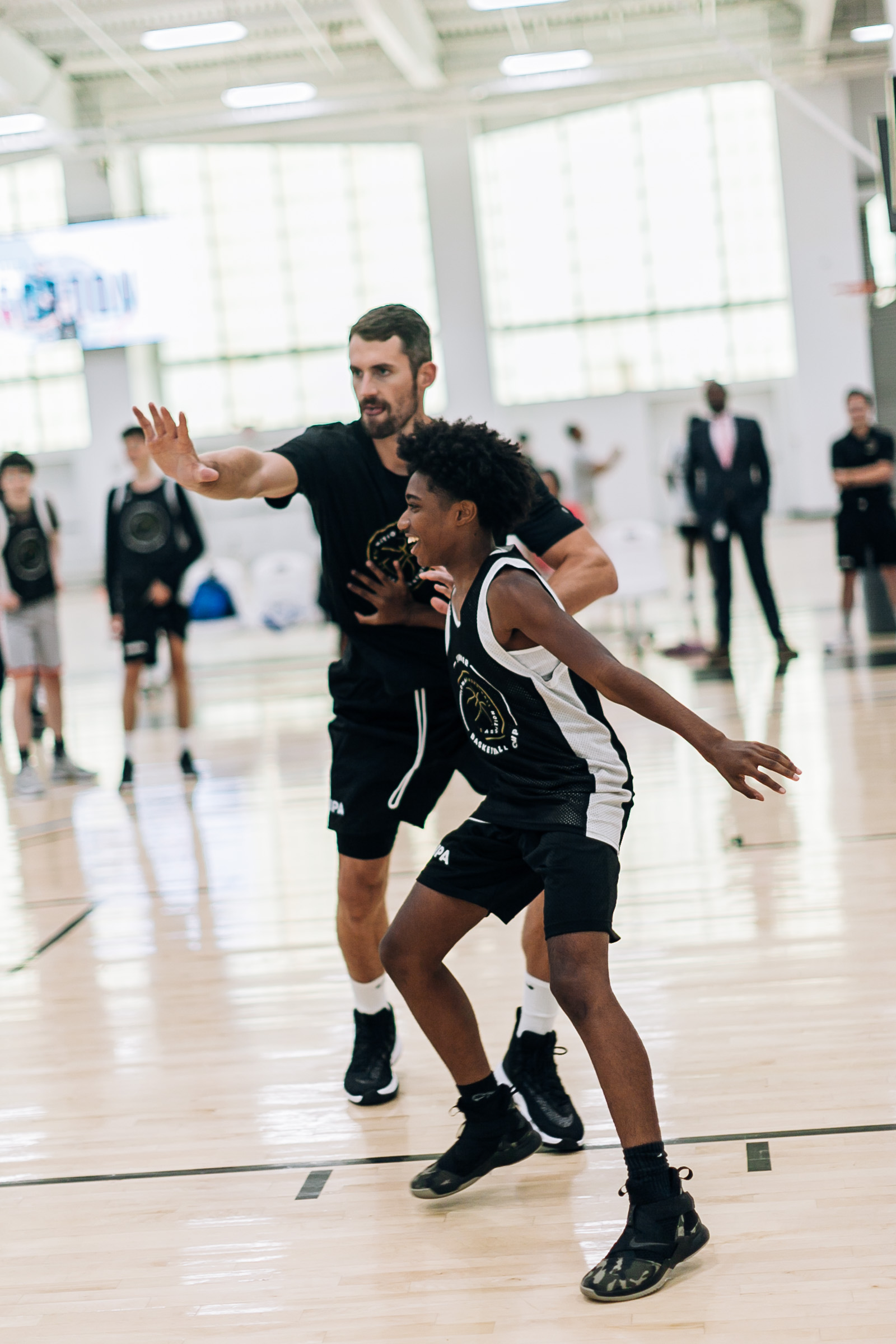A healthy shoulder is one of the most amazing joints in the human body, achieving a balance between strength, range of motion, and stability. All of these attributes need to be optimized to perform on the basketball court in the absence of pain, and even the smallest of shoulder issues can have a significant impact on your ability to play the game at the highest level. In basketball, the shoulder needs to be strong as you battle for position in the paint. It needs to be flexible as you go up for a block or reach into the passing lane. And it needs to be stable as the foundation of your jumpshot.
As a shoulder specialist, I treat athletes with the full spectrum of shoulder issues, including shoulder impingement, shoulder instability, and rotator cuff tendinitis. Shoulder disability can occur with both basketball-related shoulder injuries, overuse, and strength training that is overly focused on the large muscles around the shoulder including the pectoralis major, deltoid, and latissimus dorsi. In my experience, many athletic shoulder injuries can be prevented or treated non-surgically by focusing on stabilizing the scapula, strengthening the rotator cuff, and maximizing shoulder range of motion.
1. Scapular strengthening
As the foundation of the shoulder joint, the scapula (shoulder blade) is a uniquely-shaped bone that serves as the attachment site for 17 different muscles. This allows the scapula to contribute a significant portion of overall shoulder range of motion, as well as dynamically position the socket of the shoulder joint for optimal shoulder function. In fact, the scapula is often described as a seal balancing a ball on its nose, constantly making small adjustments to keep the ball of the shoulder joint balanced on the socket.
Despite the importance of the scapula and the number of muscles that attach to it, scapular strengthening is often overlooked. This can be achieved with scapular exercises such as scapular retractions (shoulder blade squeezes), scapular push-ups, shoulder shrugs, prone rows, and wall ball circles, among others.
2. Rotator cuff exercises
Compared to other ball-and-socket joints in the body, the shoulder has very little inherent bony stability. Instead, the shoulder relies on the rotator cuff, which is a set of four relatively small muscles around the shoulder, to keep the ball centered in the socket while the much larger muscles such as the deltoid, pectoralis, and latissimus move the arm through shoulder range of motion. In athletes with well-developed muscles around the shoulder and upper body, it is even more essential that the rotator cuff remains strong enough to keep the shoulder joint stable.
While not as satisfying as bench pressing hundreds of pounds, rotator cuff exercises include internal and external rotation against rubber band resistance, external rotation with the shoulder abducted 90 degrees, and lawn mowers, among others. This is essential to maintaining a heathy shoulder.
3. Stretching to maintain shoulder range of motion
Finally, optimizing shoulder flexibility is also important for shoulder injury prevention. By maintaining flexibility in the soft tissues around the shoulder, the ball of the shoulder joint can stay centered in the socket through the entire range of motion. If the shoulder capsule is tight, a sudden forceful motion such as going up for a block could result in a shoulder strain. In more severe cases, if there is unbalanced shoulder tightness, micro-instability of the shoulder joint can occur as well. Shoulder flexibility can be optimized through simple stretches such as table slides, wall climbs, sleeper stretches, external rotation stretches, and towel stretches behind the back, among others.
Through the course of a long season, these simple strategies involving scapular strengthening, rotator cuff exercises, and shoulder stretching will minimize the risk of a major shoulder injury and keep you healthy on the court!
About the Author
Dr. Michael Fu is an orthopedic surgeon and shoulder specialist at the Hospital for Special Surgery (HSS) in New York City, the No. 1 hospital for orthopedics as ranked by U.S. News & World Report and the official hospital of the NBPA. Dr. Fu treats the entire spectrum of shoulder conditions, including rotator cuff tears, shoulder instability, and shoulder arthritis. Dr. Fu was educated at Columbia University and Yale School of Medicine, followed by orthopedic surgery residency at HSS and sports medicine & shoulder surgery fellowship at Rush University Medical Center in Chicago. He has been a team physician for the Chicago Bulls, Chicago White Sox, DePaul University, and NYC’s PSAL.

